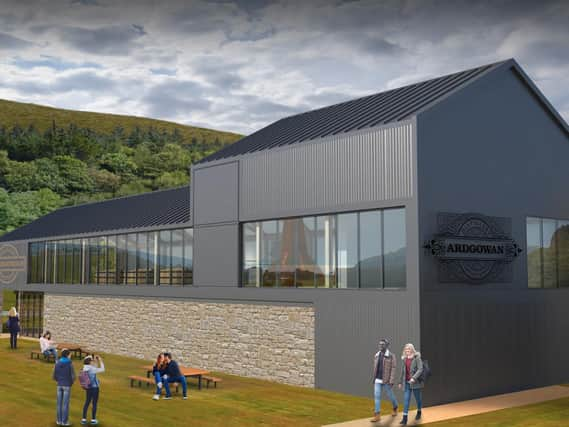New lowlands distillery granted planning permission


The new construction on the Ardgowan Estate, which will also act as a gateway to the Clyde Muirshiel Regional Park, could produce up to a million litres of whisky a year.
The design, by Michael Laird Architects, includes improvements on the original proposal – which was granted full planning consent in March last year.
Advertisement
Hide AdAdvertisement
Hide AdThe glass-fronted distillery, which has just been granted revised planning consent from Inverclyde Council, will sit alongside the distillery’s visitor centre which will be housed in existing buildings on the Bankfoot site.
“This is a state-of-the-art, modern distillery which not only looks fantastic, but will reduce our environmental impact wherever possible,” says distillery chief executive Martin McAdam.
“Our architects have worked closely with civil engineers Blyth & Blyth and process designers Briggs of Burton to create a striking distillery which fits well in the landscape and uses heat recovery and closed loop cooling to reduce energy use and water consumption, whilst the extensive use of glass means visitors will get a clear view of the bright airy interior.”
The first phase of the distillery incorporates two copper stills and six timber-clad washbacks, with a planned output of 1 million litres per annum. Future output can be doubled via the addition of two further stills in an already-approved second phase.
Last month the new distillery, near Inverkip, 30 miles west of Glasgow, released its first whisky, a 600-bottle run of Ardgowan Expedition 20-year-old, a premium blend of malts containing whisky which has been to the South Pole with explorer Robert Swan. Ardgowan plans to follow this with a series of limited-edition malts – at around the £50 price mark – next year. These will showcase premium single and blended malts in the seven to eight-year-old range.
Illicit stills and smuggling have been part of the local history of Ardgowan for hundreds of years. During the 18th and 19th centuries, the Firth of Clyde became a favourite haunt of merchants dealing in contraband. In the 1890s Ardgowan was again associated with whisky making, the original Ardgowan Distillery Company Limited was formed and a whisky distillery was built in Baker Street in Greenock.
The distillery operated through the early 1900s and was converted to make industrial alcohol before World War II. It finally ceased production in 1952.
Last year, the distillery received £982,000 award from the government’s Food Processing, Marketing and Co-operation grant scheme.